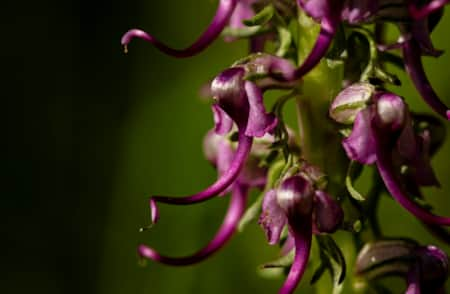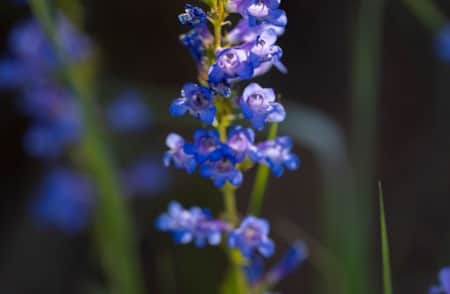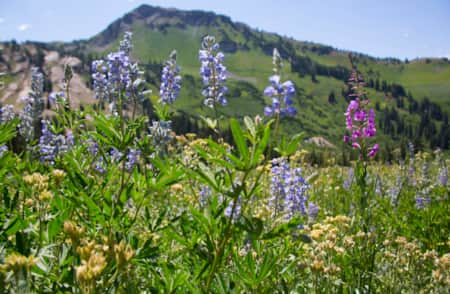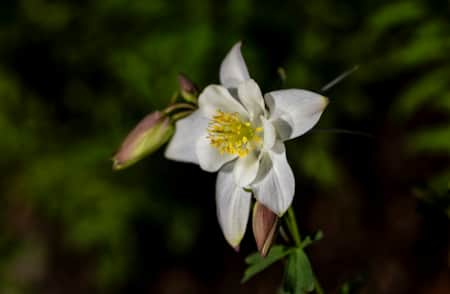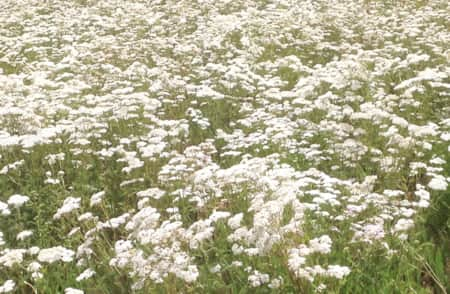Native Utah Wildflowers
-

Elephant's Head
Latin name: Pedicularis groenlandica
Elevation: 6,000 to 10,000 feet
Flowering season: May, June, July
Color: Pink, purple
The Elephant’s Head is another spike of showy clusters resembling an elephant’s face — twisted upper petals and two side lobe “ears” with a turned-up “snout.” Appearing shortly after the snow melts, this Utah native boasts 18 inches of pink-purple flower clusters atop purplish, fern-like leaves. They grow in mountain stream beds and marshy meadows. -

Indian Paintbrush
Latin Name: Castilleja
Elevation: 9,000 to 11,000 feet
Flowering Season: June, July, August
Colors: Red, orange, yellow, pink, white
Like its name, the Indian paintbrush resembles the artist’s tool with its bright, color-tipped bracts. It grows in prairies, open woods, foothills, canyons, near the mountain timberline and in western and southern desert areas. Paintbrush nectar attracts bees and hummingbirds. -

Mountain Bluebell
Latin name: Mertensia ciliata
Elevation: 5,000 and 12,000 feet
Flowering Season: April, May
Color: Blue
Mountain bluebells grow best in habitats like stream beds, creeksides, wet cliffs, damp thickets and subalpine meadows in Utah. The tall forb prefers shade and constantly moist soil. The bright blue blossoms are long and bell-shaped (hence, their name), meanwhile the leaves are blue-green and elliptical or oval in shape. -

Silvery Lupine
Latin name: Lupinus argenteus
Elevation: 4,000 to 12,000 feet
Flowering season: June, July
Color: White, purple
Silvery lupine is a show-stopper among Utah’s wildflower scene and one of the best-known mountain blooms due to its showy spike of violet, pea-like petals and palm-shaped leaves. It also is an easy and versatile grower, adaptable to a variety of habitats from mountain valleys to high mountain areas, in sun or shade. -

Utah Columbine
Latin name: Aquilegia scopulorum
Elevation: 6,500 to 11,500 feet
Flowering Season: May, June
Color: White, blue, coral red, yellow
Utah columbine flirts with subalpine rocky slopes, forests and adjacent meadows, and prefers cool, damp areas over dry, sandy ones like many Utah wildflowers. Columbine petals showcase five wing-shaped sepals, along with five tube-shaped petals. In fact, the common name columbine comes from the Latin word for “dove,” and if you look closely, the blooms resemble tiny inverted versions of the bird. -

Yarrow
Latin Name: Achillea millefolium
Elevation: 4,200 to 12,000 feet
Flowering Season: May and June
Colors: White to pink
Common yarrow owns an umbrella-shaped canopy of flower clusters — five ray flowers containing ten to 20 tiny flowers, to be more precise. Typically, this native-to-Utah bloom is white or pink, unlike its commercial yellow cousin, Achillea moonshine. Common yarrow is a low-growing plant with grayish-green, fern-like leaves.
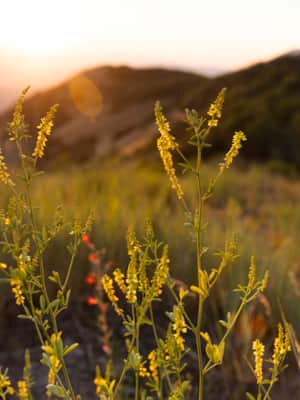
Up Close and Personal With Utah’s Wildflowers
Macro photographer Angie Payne shares her tips for capturing the classic beauty of wildflowers in an untraditional way.

Utah's state flower, the sego lily.
Utah's State Flower
If you attended grade school in Utah, you know that the sego lily is the state’s flower. For out-of-towners, here’s a quick lesson: Western Native Americans taught Mormon pioneers to use the sego lily bulb as a food source in the mid-1800s after an infestation of crickets (later called “Mormon crickets”) destroyed their crops. Voila! The sego lily becomes the state flower in 1911. Sego lily season occurs in May, June and July in open sagebrush foothills and valleys and open ponderosa pine stands. Sego lilies are drought-tolerant and thrive in dry, sandy soil.
Latin Name: Calochortus nuttallii
Elevation: 4,500 to 8,000 feet
Flowering Season: May, June, July
Colors: White, lilac, or yellow flowers
-
Albion Basin
Albion Basin reigns supreme as the queen bee of mountain wildflowers. Follow Little Cottonwood Canyon Road to Alta Ski Resort during the summer and you’ll drive straight to one of the best wildflower-viewing spots in the Wasatch-Cache National Forest. Nestled alongside the glacially carved mountainside, Albion Basin is a high-altitude meadow filled with more than 120 species of plants. Peak season for lupine, paintbrush, columbine and sunflowers is mid-July to early August.
-
Alpine Pond Trail
Ever stood on top of a grand staircase at 10,000 feet of elevation that overlooks a half-mile-deep geological amphitheater — in Utah? If not, head to Cedar Break National Monument near Brian Head. Cedar Breaks’ Alpine Pond Trail takes its visitors on a 2.2 mile moderately trafficked loop that meanders past meadows filled with lupine, mountain bluebell, paintbrush, yellow bush and penstemon. Be prepared to pay a $10 per person entrance fee to enter the Cedar Breaks National Monument.
-
Lava Tube Trail
Yes, you read that correctly: Utah has its own lava tubes. Located in Snow Canyon State Park near St. George, the Lava Tube Trail meanders through a lava field surprisingly sprinkled with desert wildflowers. Be on the lookout for fiddleneck, elegant lupine, Palmer penstemon, firecracker penstemon, sego lily, yellow evening primrose, pale evening primrose, globemallow, desert 4 o'clock, purple sage, indigo bush and desert willow. This moderately difficult trek is a 2.3-mile out-and-back experience that can be accessed year-round. Be sure to bring a flashlight or headlamp to explore the insides of two lava-formed caves.
-
Mount Timpanogos
Rocky Mountain goats aren’t the only things Mother Nature flaunts along the Mount Timpanogos Trail. The trail also touts showy displays of elephant’s head lousewort, penstemon, columbine, mountain bluebell, yarrow, larkspur, paintbrush, skyrockets, bistorts and Jacob’s ladder. But hiker beware, as this trail isn’t for the casual nature walker. From either of its two trailheads, this out-and-back climb is 15 miles of heavily-trafficked trail and is rated difficult. Hikers will pass Emerald Lake at 10,380 feet and summit at 11,749 feet.
-
Silver Lake Loop
Big Cottonwood Canyon’s Silver Lake Loop is a popular trail due to its ease of access and ability. Conveniently located at Brighton Ski Resort’s parking lot, the trailhead leads to a walkable trail around the lake. At just under a mile, the loop is great for children, seniors and anyone else looking to casually spot birds, wetlands and the occasional moose. Be sure to pick up a wildflower guide at the Silver Lake Recreation Area visitor center.
-
Tony Grove Nature Trail
Tony Grove Lake sits about 19 miles east of Logan at an elevation of 8,100 feet. It’s known for its campground, extensive trail system and vivid display of summer wildflowers. The Tony Grove Nature Trail, in particular, is the easiest way to take in the daisies, lupines, columbines, paintbrushes, monkshood and mountain sunflowers that are in bloom in mid-to-late summer. The moderately-trafficked loop is 1.2 miles and great for any skill level.
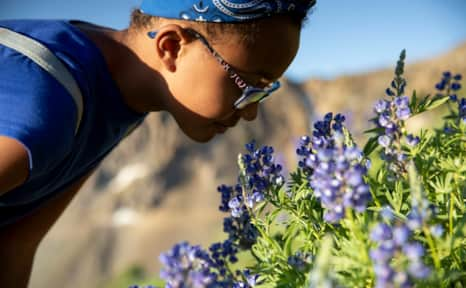
Hiking Snowbird Resort in Little Cottonwood Canyon.
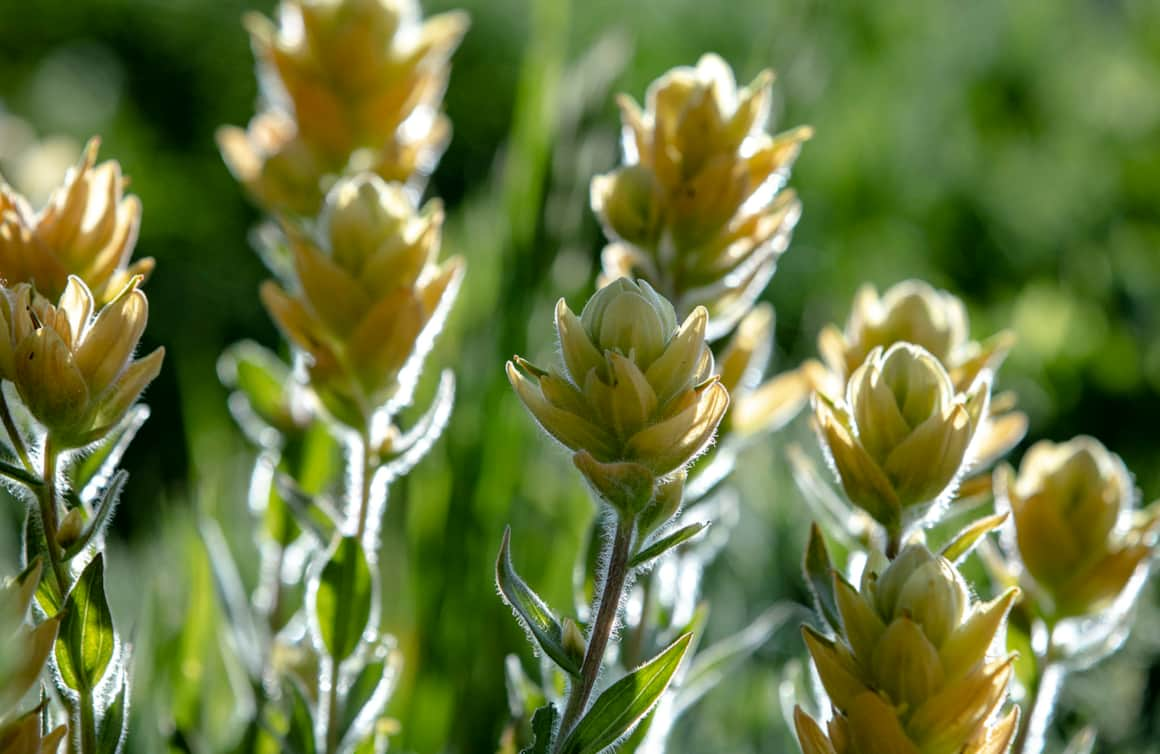
Indian paintbrush along the trail.
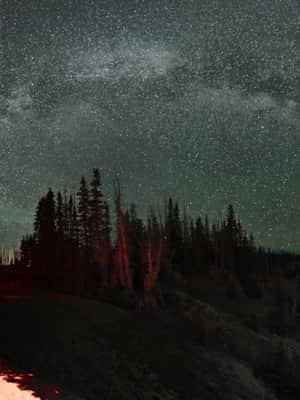
Sunny Skies, Epic Wildflowers and Hoodoos: Summertime in Cedar Breaks National Monument
A summertime trip to Cedar Breaks National Monument is candy for the eyes. A panache of color explodes here during the first weeks of July when the 260 species of wildflowers are in full bloom.
Flower Festivals & Gardens
Tulip Festival at Thanksgiving Point
In April, Thanksgiving Point in Lehi hosts one of Utah’s most popular events: the annual Tulip Festival. More than 100,000 guests take in the sensational display created with bulbs imported directly from Holland.
Blooms to see: nearly 300,000 tulips.
Wildflower Festival in Cedar Breaks
Just outside Cedar City, the Cedar Breaks National Monument comes alive with wildflower color in July during the Wildflower Festival in Cedar Breaks. Over 250 wildflower species paint the canvas of colorful cliffs of the Markagunt Plateau.
Blooms to see: columbine, aspen bluebells, milkweed, Indian paintbrush, sunflowers, primrose, aster, flax, fireweed, pretty shooting star, marsh marigolds, lupine and larkspur.
Red Butte Garden in Salt Lake City
Red Butte Garden sits on 100 acres in the Salt Lake City foothills. As the largest botanical garden in the Intermountain West, the community-funded garden contains over 21 acres of developed gardens, including the herb garden, rose garden and a tropical-plant filled Orangerie.
Blooms to see: 524,000 bulbs, herb garden, rose garden, a tropical-plant-filled Orangerie, fragrance garden, water pavilion garden, wildflower meadow and water conservation garden.
